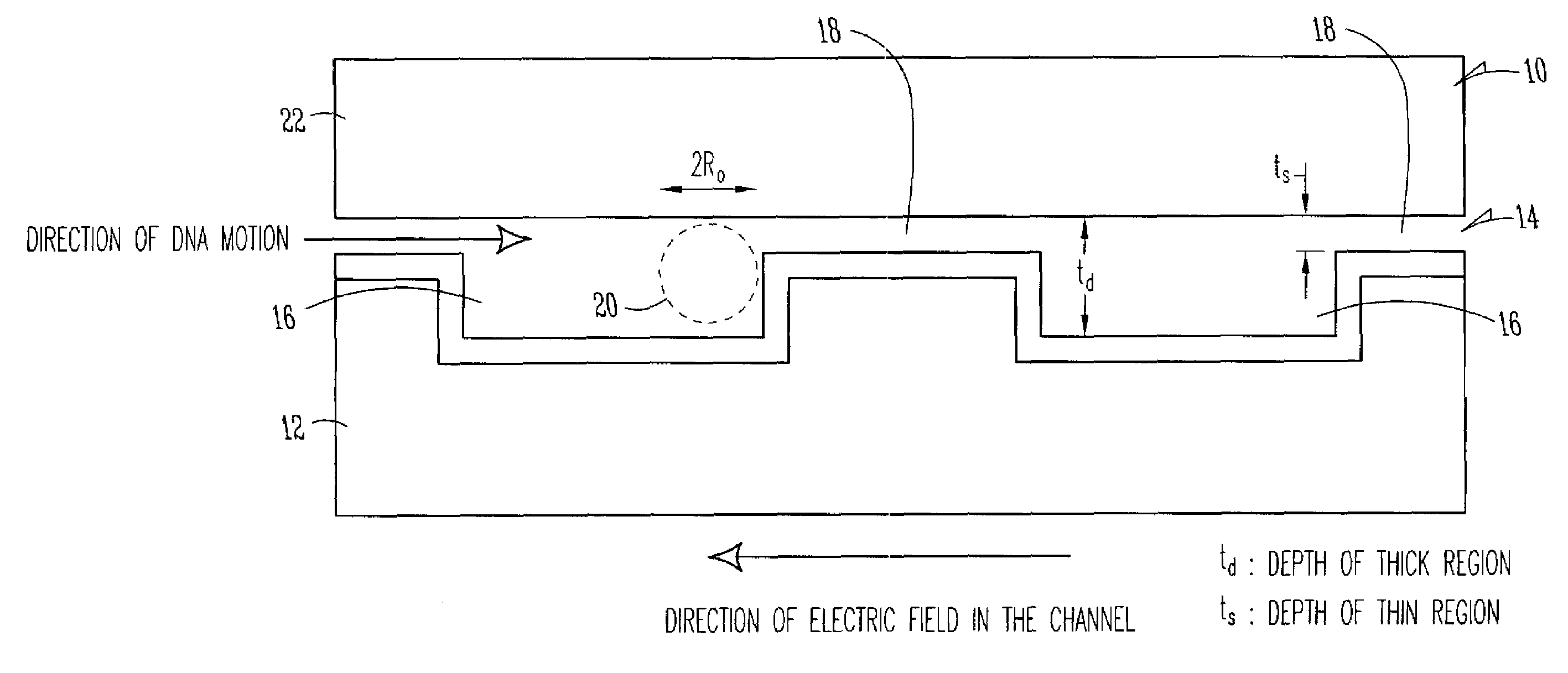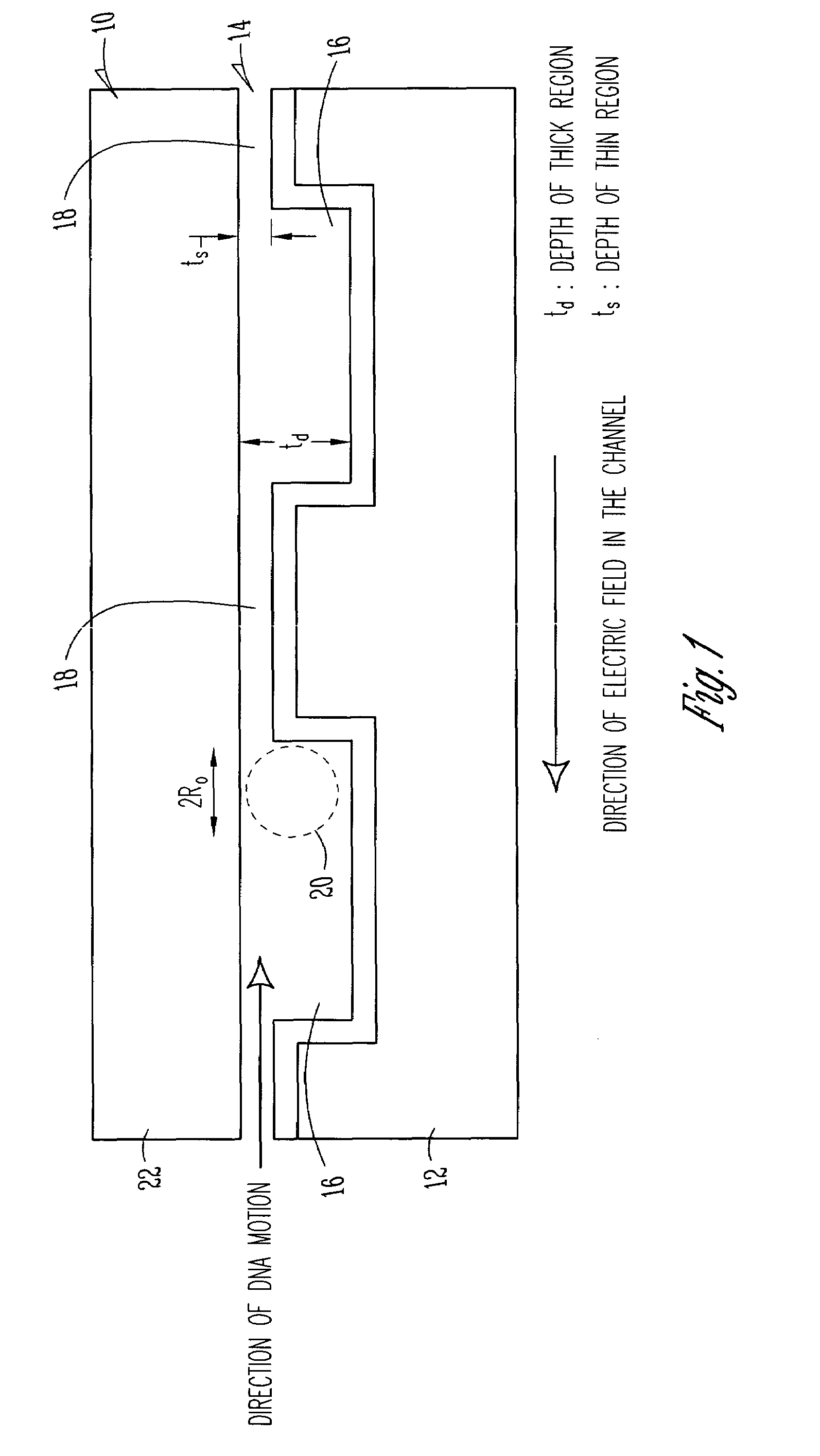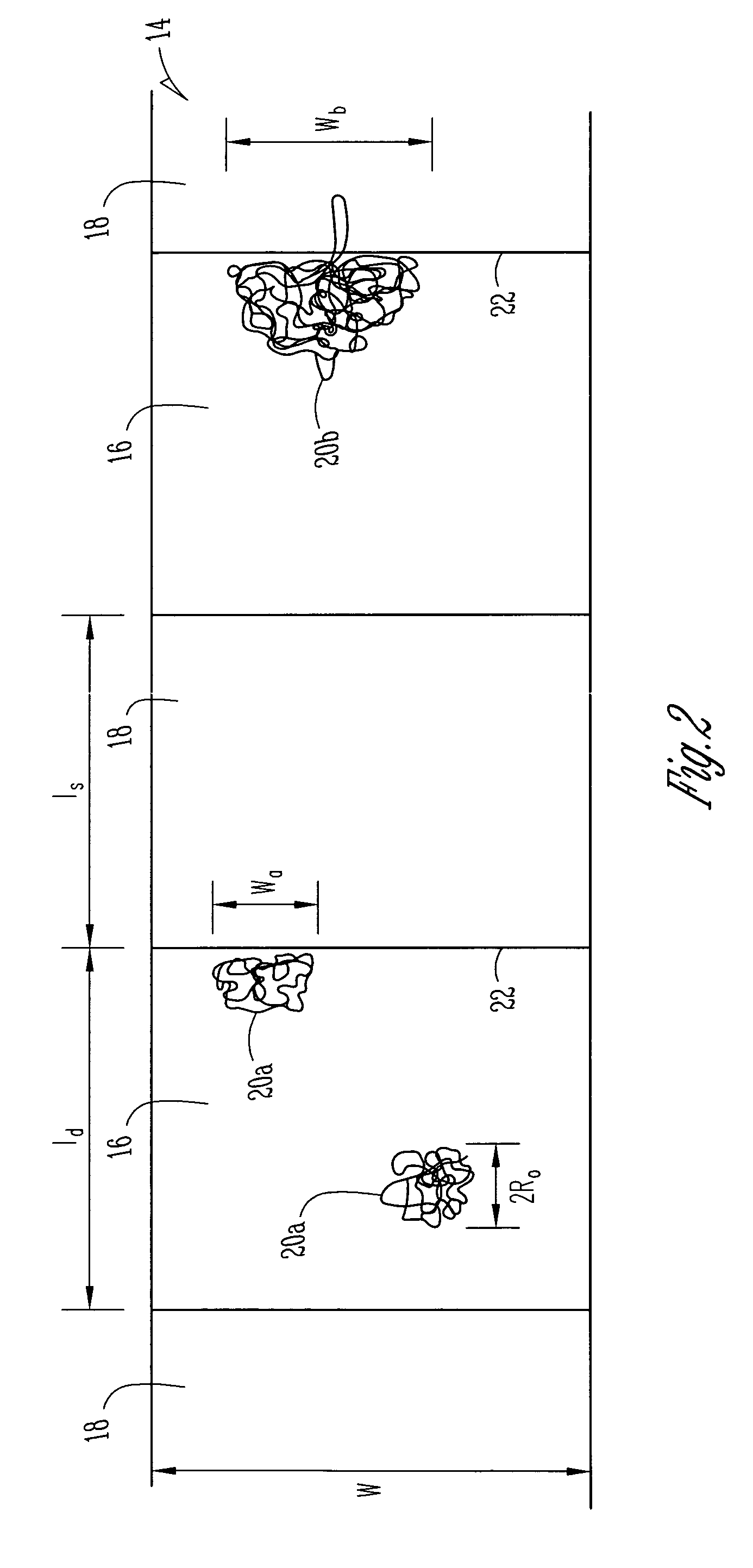Entropic trapping and sieving of molecules
a technology of entropic trapping and sieving, applied in the direction of liquid/fluent solid measurement, fluid pressure measurement, peptide, etc., to achieve the effect of convenient fabrication
- Summary
- Abstract
- Description
- Claims
- Application Information
AI Technical Summary
Benefits of technology
Problems solved by technology
Method used
Image
Examples
Embodiment Construction
[0022]Turning now to a more detailed consideration of the present invention, there is illustrated in FIG. 1 a nanofluidic sieving device 10 in accordance with the present invention. The device 10 includes a silicon wafer or substrate 12 in which is fabricated a nanofluidic channel 14 having alternating thick regions 16 and thin regions 18 along its length. The channel 14 preferably is covered by a transparent top plate 22 which is bonded to the substrate 12 along the edges of the channel. The nanochannel 14 is filled with a buffer solution or other liquid containing DNA molecules or other polymer molecules 20 to be separated. It will be understood that any desired material such as glass or plastic may be used as the substrate 12, and as the transparent coverplate 22, and any conventional bonding techniques can be used to seal the coverplate 22 to a particular substrate 12.
[0023]In the illustrated embodiment of the invention, which is specific for DNA molecule separation by way of ex...
PUM
| Property | Measurement | Unit |
|---|---|---|
| Length | aaaaa | aaaaa |
| Size | aaaaa | aaaaa |
| Equilibrium | aaaaa | aaaaa |
Abstract
Description
Claims
Application Information
 Login to View More
Login to View More - R&D
- Intellectual Property
- Life Sciences
- Materials
- Tech Scout
- Unparalleled Data Quality
- Higher Quality Content
- 60% Fewer Hallucinations
Browse by: Latest US Patents, China's latest patents, Technical Efficacy Thesaurus, Application Domain, Technology Topic, Popular Technical Reports.
© 2025 PatSnap. All rights reserved.Legal|Privacy policy|Modern Slavery Act Transparency Statement|Sitemap|About US| Contact US: help@patsnap.com



